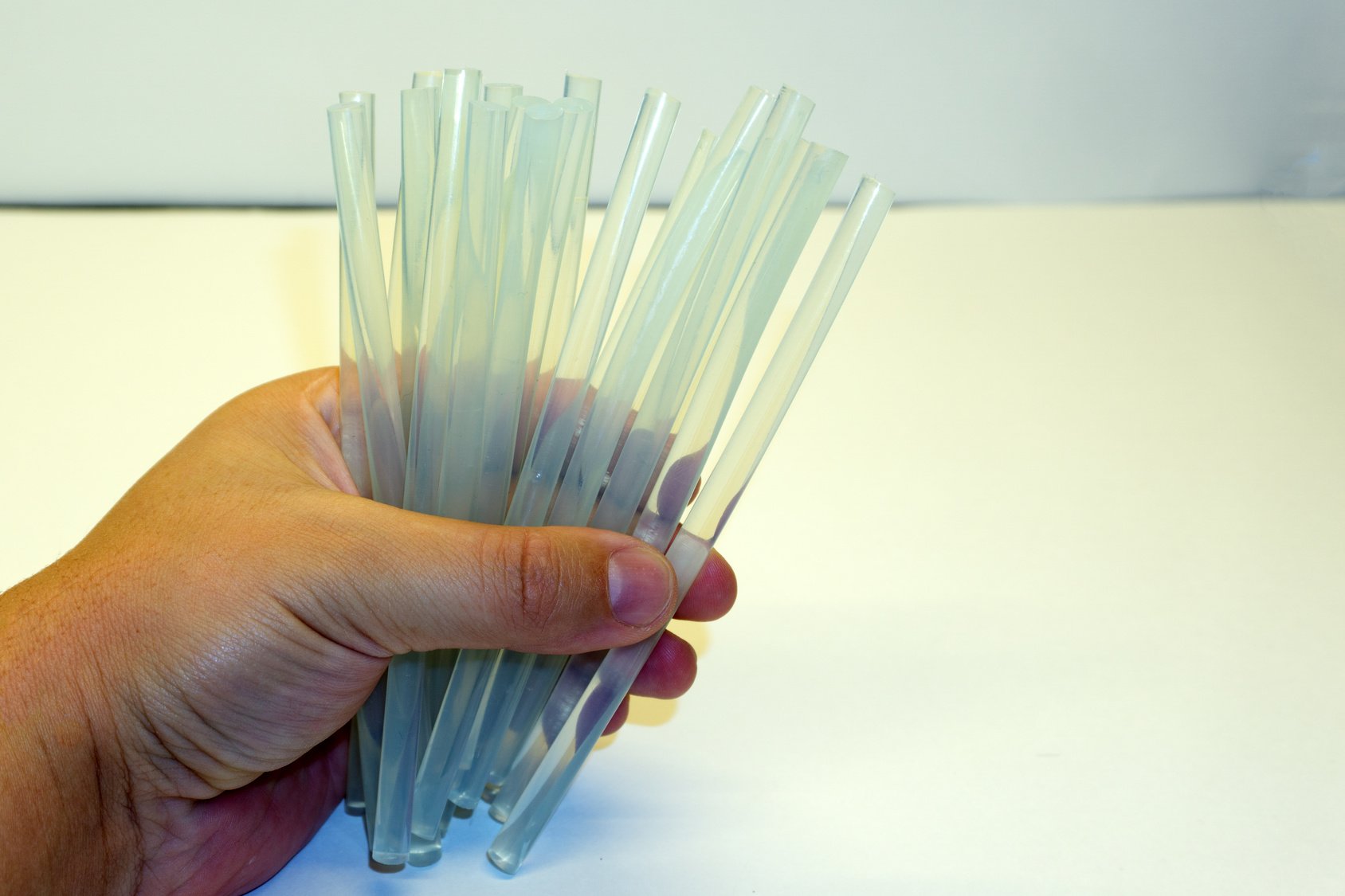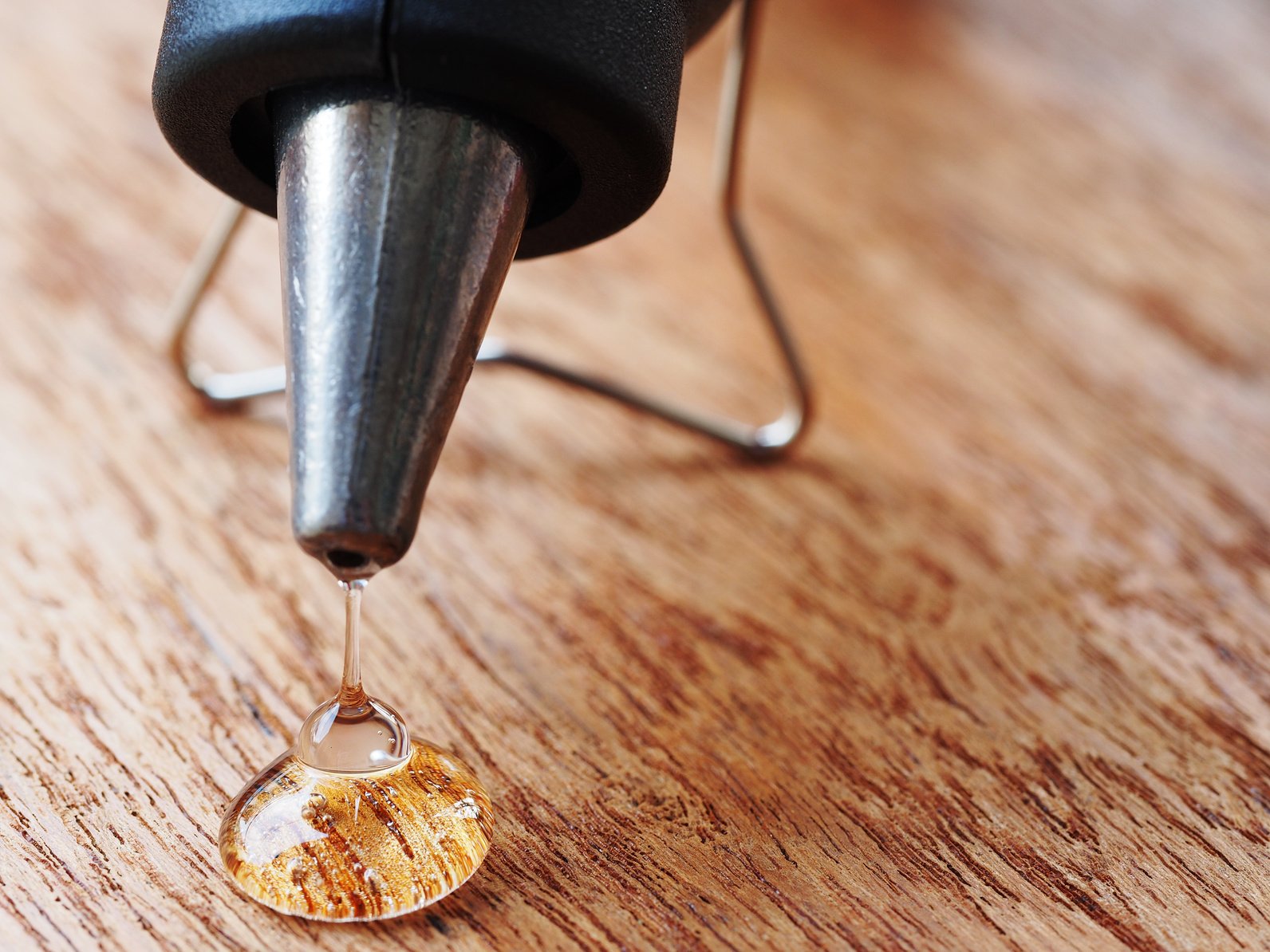When you’re putting your cosplay together, you want to make sure it’s going to stick together to stay. Sometimes, the solution is to add a little bit of heat. One of the most commonly used thermal adhesives on the market is hot glue, a great general adhesive that almost always comes in handy in a pinch. This heat-activated glue has a wide variety of abilities that most cosplayers would benefit from at one point or another.
In this post, we’ll discuss everything you need to know about using hot glue for cosplay, including which materials it works best with as well as the pros and cons of incorporating it into your costumes and props.
How a Hot Glue Gun Works

If you’ve used hot glue, you’ll know that it comes in a solid stick form that turns into a gel liquid when heated and applied through the nozzle of a hot glue gun. Hot glue guns come in high- and low-temperature varieties, and for most materials you’ll be using for cosplay, a high temperature glue gun will be most effective. (Low temperature glue guns can be more appropriate for very thin fabrics or insulation foam that will melt.) You should only use the correct temperature of hot glue sticks that corresponds to your gun’s temperature. A high temp glue gun will scorch a low temp glue stick. If you’re using both types of guns, you can purchase multi-temperature glue sticks.
The glue sticks also come in various sizes and lengths, so make sure you choose the correct size for the gun you have. Trying to force the wrong size of glue stick into your gun can be messy and dangerous. Just double check the size before you buy glue sticks!
Hot glue guns are pretty straightforward to use and shouldn’t take long to get used to. Once your gun heats up, all you have to do is insert a glue stick, point the nozzle, and squeeze the trigger to dispense the glue.
Best Uses for Hot Glue in Cosplay
Because hot glue is so multi-purpose, quick-drying, and easy to apply, it’s become a go-to in the cosplay community for quick fixes and adhesive challenges. Here are a few of the best uses and applications for hot glue in cosplay:

- Hot glue is perfect for gluing cardboard or paper pieces together.
- Binding thicker fabrics, knits, or leathers together is easy with hot glue.
- High temperature hot glue is also ideal for binding EVA/craft foams together because it provides a permanent hold without the toxic fumes of contact cement.
- Hot glue can be used to fill any gaps in foam because it molds to fit the open space. This can come in handy if you accidentally drill to big of a pocket for a prop handle or if you accidentally cut a nick out of a piece of foam, to give a few examples.
- Hot glue also provides permanent adhesion on wooden pieces.
- You can draw 3D designs directly onto fabric, foam, cardboard, or wood with your hot glue gun. You can choose to paint over the raised surface to create embossed details.
- Due to its multi-purpose nature, hot glue can be a great solution for situations where you might be attaching one material to another because it won’t react poorly to either material.
- And finally, hot glue is a great catch-all for cosplay repairs and touch ups. You can easily pack one in your bag for a convention and use it to fix any broken or loose pieces easily and quickly in your hotel room.
The Advantages and Disadvantages of Hot Glue

The benefits of working with hot glue are mostly related to its convenience. Hot glue has become such a go-to because it’s inexpensive and accessible. You don’t have to worry much about wasting hot glue because it’s usually easy and cheap to get more. In addition to being budget-friendly, the actual adhesive properties of hot glue can also provide a lot of advantages for cosplayers. Hot glue is a permanent adhesive because it hardens quickly as it cools on the surface of your material. While you have a few seconds of flexibility before your pieces are stuck in place, perhaps the best advantage of hot glue is how quickly it dries.
However, there are a few disadvantages to working with hot glue as well. For starters, of course working with heat means the potential of burning your fingers a little. The tip of the glue gun is hot to the touch, and while hot glue likely won’t do any serious damage if it drips onto your skin, it is hot enough to burn you. And as the glue dries so quickly, it can be hard to peel off for a few seconds. As long as you’re careful with your glue gun, this shouldn’t be too much of a problem.
Additionally, the heat from a glue gun can also potentially melt a few common cosplay materials: insulation foam and thin fabrics, to name a few. While using a low temperature glue gun or only using hot glue on these materials in inconspicuous areas should solve this issue, other adhesives may be a better choice if these elements of your cosplay will be on full display.
Some of the most frustrating disadvantages of working with hot glue, however, have to do with the way they can potentially make your cosplay look. For one thing, hot glue tends to leave little strings of adhesive behind. Little bits of adhesive will pull off with your gun, so you’ll generally need to pick these strings off of your cosplay as you go to avoid all those loose, dangly pieces. Also, if you use too much hot glue, you might find that it squishes out from your seams as you press pieces of material together. The more this “hot glue evidence” shows in your cosplay, the less professional your pieces will look.
Finally, while hot glue is certainly considered a permanent adhesive, there are a few situations where hot glue can fail, and though rare, the results can be potentially costume-ruining. After some of time has passed, hot glue can eventually become crusty and brittle, making it possible for your cosplay to crack apart at the seams. Additionally, warmer temperatures or potentially even body heat can cause the hot glue to reactivate and melt, and your costume or prop pieces could start sliding apart. In some cases, especially with EVA foam, contact cement, while toxic, can provide a stronger adhesive bond.
Choosing Hot Glue for Your Cosplay

In the past, hot glue has gained a bit of a notorious reputation in the cosplay community. In some circles, obvious “hot glue jobs” are the first sign of a rushed cosplay. And in recent years, the emergence of more innovative cosplay adhesives (like double-sided sheets and even thermoplastics, to an extent) has contributed further to the stigma associated with hot glue. Despite this, almost every cosplayer turns to hot glue at some point as a quick and easy solution to adhesion challenges where nothing else seems to work.
At the end of the day, hot glue may be best suited for the smaller, lower-risk details of your cosplay, but that’s not to say you couldn’t make an entire cosplay out of hot glue. If you’re relying heavily on hot glue to keep major parts of your costume together, however, it might be worthwhile to have a back up plan in mind. Hot glue tends to work best in conjunction with other stronger adhesives, but that doesn’t mean it’s not great to have on hand when you’re in a pinch.